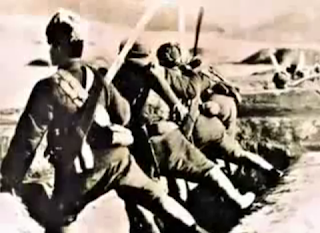Why bother with stepping in stances?

Introduction My preceding discussion about the pitfalls of "natural stepping" 1 has prompted me to address the issue of why so many karate schools put great emphasis on stepping in basic stances. Certainly, historical factors play a role: just before and after World War II, karate was popularized in Japan as a kind of exercise for school children. Karate masters like Gichin Funakoshi (who was a school teacher and who is credited as being one of the first to introduce karate to mainland Japan) are said to have quite deliberately tailored their classes to mass teaching, emphasizing basic training in large groups, often at the expense of bunkai (applications) and more in-depth understanding. When Westerners came to Japan in the post-War years, this "basic" karate was generally what they encountered - and naturally it was this karate they brought back. To some extent, this "basic" karate remains a fixture in classes right around the world to this day. Onl...

